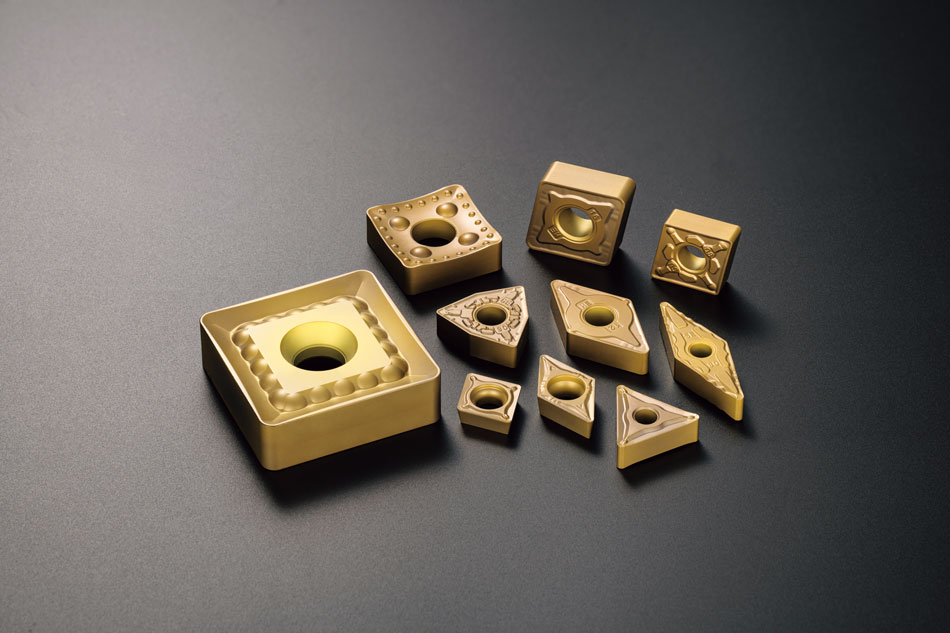Sumitomo Electric Industries, Ltd. (Head office: Chuo-ku, Osaka, President: Osamu Inoue, hereafter "our company") has developed and launched a new high-efficiency steel turning grade AC8020P for sale as of June 2021.
In the turning of machine components for the automotive industry, heavy electrical machinery, steel, and construction machinery components etc., there is an increasing demand for higher efficiency and longer tool life of cutting tools to shorten lead times and reduce machining costs. In addition, as manufacturing sites are reducing personnel (automation, unmanned operation), there is a requirement for stability without unexpected issues during cutting operations. In response to these needs, our company has developed the new AC8020P grade, ideal for higher-efficiency steel turning.
Along with AC8015P for high-speed machining, general-purpose AC8025P, and AC8035P for interrupted machining, the AC8000P Series for steel turning now comprises four grades. Our company is committed to achieve significant efficiency improvements and cost reductions in all aspects of steel turning.

1. Features
The use of ABSOTECH™, our proprietary CVD* coating technology, on a high-hardness carbide substrate further enhances the high strength of the alumina layer with controlled crystal orientation, enabling high resistance to both wear and chipping. Chipping resistance is more than 2.5x that of conventional grades, achieving excellent stability and long tool life, especially in high-efficiency machining of medium to high carbon steel.
2. Lineup
Insert: Total of 330 Cat. Nos.
3. Sales Plan
280 million JPY/Year in the first year, 1 billion JPY/Year after 3 years
4. Price
(Standard Product) CNMG120408N-GU: 850 JPY (excluding tax)
*CVD (Chemical Vapor Deposition):
A vacuum deposition method which uses a gas reaction to form a thin layer of coating. In this method, raw material gas containing the ingredients of the target coating is supplied to the heated substrate material within a reaction chamber, forming the coating through a chemical reaction in gas phase on the substrate surface.

